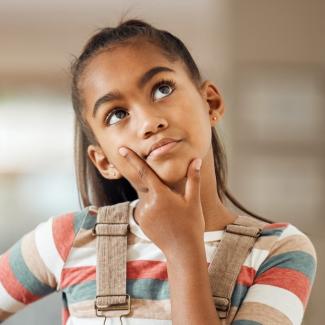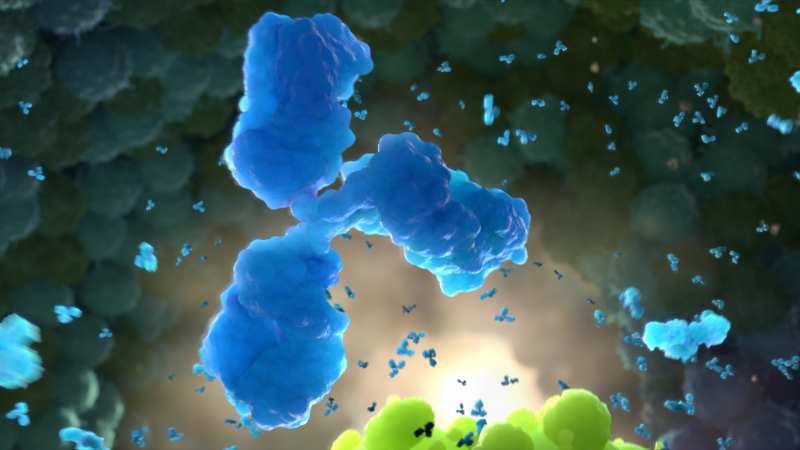Spotlight on: Memory & Vaccines – Making the Connections

When we think of memory, typically we think of our ability to recall facts, dates, or past experiences. But there is another kind of memory that happens in our bodies often without us even realizing it — immunologic memory. The same way we can train our brains to remember something, like a song lyric or a first aid procedure, our immune systems can be trained to remember pathogens. After exposure, our immune systems recognize the pathogen and respond more quickly. Vaccines are a technology that people have developed to train our immune systems by leveraging the body’s ability to make memory immune responses. The difference is that vaccines generate immunologic memory by introducing part or all of a pathogen in a controlled manner, both in terms of dose and time.
Along with immunological memory, there are other ways that vaccines and memories are related. For example, as more people in a community become immune to a pathogen, the frequency and impact of a disease can be diminished, or even, in some cases, eliminated. This has made many diseases distant memories. Additionally, as vaccines became available, childhood mortality decreased and life expectancy increased, giving people opportunities to create more memories throughout their lifetime.
This relationship between vaccines, the immune system and memories is one that can be used to help students understand the immune system and vaccines. Check out five activity ideas that explore this relationship.
Activity 1: Immune System Memory Match
Have students play with a partner or in a small group. Share the list below with students and provide 20 index cards to each group of students. Students should copy each of the terms on to two cards, so they have a pair of cards for each term.
- Bone Marrow
- Thymus
- Lymph nodes
- Spleen
- Neutrophils
- Macrophages
- Dendritic Cells
- NK Cells
- B Cells
- T Cells
Provide the following instructions to the student groups to play the game.
- Have the first player look away while another player lays all the cards face down in a grid pattern.
- Have someone time the first player. First player flips 2 cards at a time. If they match, students should leave them face up, if not, they should be turned back over.
- When all cards have been matched, stop the timer and have a student record the time. Flip the cards back over, but DO NOT MOVE their positions.
- The first player repeats the game a second and third time, and the other player(s) record the time. Repeat the game giving the other player(s) a turn to play three rounds with each being timed.
After the initial rounds are completed, ask the players to note how much their timing improved on each round and calculate the percentage as desired. Draw attention to how much easier and faster each subsequent round became and connect this to how immunologic memory works.
Optional activity extension
If your lesson includes a discussion of how pathogens change to avoid the immune system, and if time allows, you could extend this activity to illustrate this point.
- Reset the game, but this time have a player rearrange just one row of the cards. Allow the first player to try again.
- Ask students to note the timing again and see how much it was impacted by the change. This represents minor changes in pathogens that can affect the immune response.
- Reset the game again, but this time, completely shuffle the deck.
- Ask students to note how the difficulty of this round changed from previous rounds. Draw attention to how, by essentially starting the game over again, they basically had to start over for figuring out the matches. This is similar to how our immune system would respond to a major change to a pathogen. Rapid, major changes in a pathogen allow it to completely avoid recognition by the immune system, forcing the body’s immune system to learn to recognize the pathogen again.
Activity 2: What Do You Remember?
Memories of others can help us understand history. Ask students to interview a family member or someone else they know to find out what the person remembers about diseases that are no longer common. Students can develop interview questions individually or the class can brainstorm and agree on a set of interview questions. Have students prepare a short summary or video of their interview and present it to the class, so the group can compare what was learned. Finally, have them reflect on their overall learning from the experience by completing the student reflection questions below. Examples of once-common vaccine preventable diseases that may be useful to ask about include polio, measles, mumps, and chickenpox, but interviewees may recall others.
Some examples of potential interview questions could be:
- Did you have any friends or family members that were affected by a vaccine-preventable disease, or were you yourself impacted?
- Are there any diseases that you remember from your childhood that aren’t common anymore?
- If yes, can you describe what the disease was like?
- What did people think about the disease? For example, were they scared that they or their family would get the disease?
- Did people do anything to try to avoid the disease?
Student reflection questions (related to the class experience at large):
- What were the diseases that came up the most in the interviews?
- What surprised you most about the responses?
- From the interview responses, who did it seem like vaccine-preventable diseases impacted?
Activity 3: What Makes a Memory?
- Have students read the Parents PACK article, “What’s Your Best Memory?” and view the VEC “Vaccines Make Memories” posters: Memories Circles Poster | Memories Squares Poster
- Ask students to write two paragraphs reflecting on what the materials made them think about, whether they learned anything new, and what they thought about the materials and messages.
Optional activity extension
Encourage students to develop their own poster, advertisement, infographic, or meme exploring the relationship between memories and vaccines.
Activity 4: Now and Then
- Assign or have students choose a vaccine-preventable disease from the list below and find how many cases of that disease typically occur today. Possible topics: diphtheria, hepatitis A, hepatitis B, Haemophilus influenzae type b (Hib), human papillomavirus (HPV), influenza, meningococcus, measles, mumps, pertussis, pneumococcus, polio, rotavirus, rubella, smallpox, tetanus, varicella (chickenpox)
- Next, students should research the disease to learn how many cases commonly occurred each year before and after a vaccine became available.
Below are some websites for students to use during their research:
- Global Immunization: Worldwide Disease Incidence, VEC
- Vaccine History: Vaccine Availability Timeline, VEC
- Annual number of cases of select infectious diseases in the U.S. before and after the development and use of vaccinations as of 2022, Statista
- Vaccine History: The Impact of Vaccines, VEC
- Comparison of 20th Century Annual Morbidity and Current Morbidity (slide 1), CDC
- Comparison of Pre-Vaccine Era Estimated Annual Morbidity with Current Estimate (slide 2), CDC
- Immunization and vaccine-preventable communicable diseases, WHO
- Vaccination, Our World in Data
- Data Catalogue: Vaccination (cases), Our World in Data
Optional extension activity
Encourage students to learn the symptoms and long-term effects of their chosen disease. Have them write a diary entry from the perspective of someone who became sick with the disease before there was a vaccine.
Activity 5: Polling about Disease Memories
- Have students poll five (5) different people to find out how many have been sick with or known someone sick with the following diseases: chickenpox, measles, mumps, pertussis (whooping cough), and polio. Encourage students to poll people from different age groups.
- Students should record the age and response of each person polled.
- As a class, collect the data and analyze the trends. Discuss what patterns, if any, emerge. Trends that could emerge relate to different age groups remembering different diseases based on whether vaccines were available at the time.
- Using the data as a starting point, facilitate a class discussion about how people in different age groups might have different memories about the diseases based on how common they were at different periods throughout history.
Optional activity extension
If students completed Activity 4, “Now and Then,” they can discuss their findings related to cases and deaths before and after vaccine availability and how those findings align with their Activity 5 polling data.

